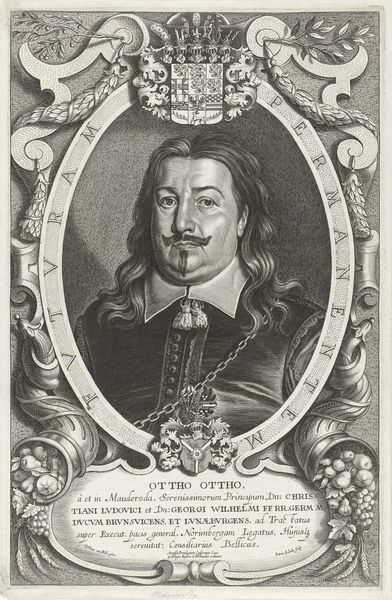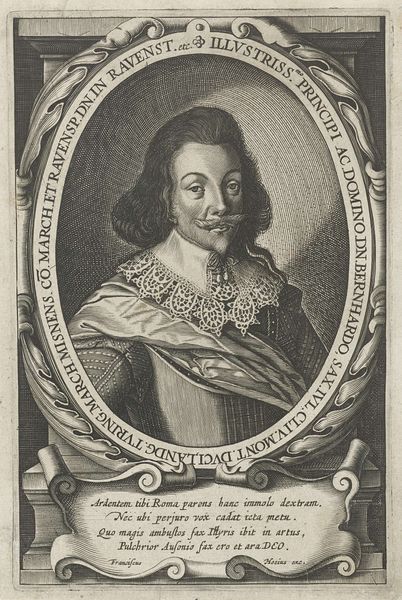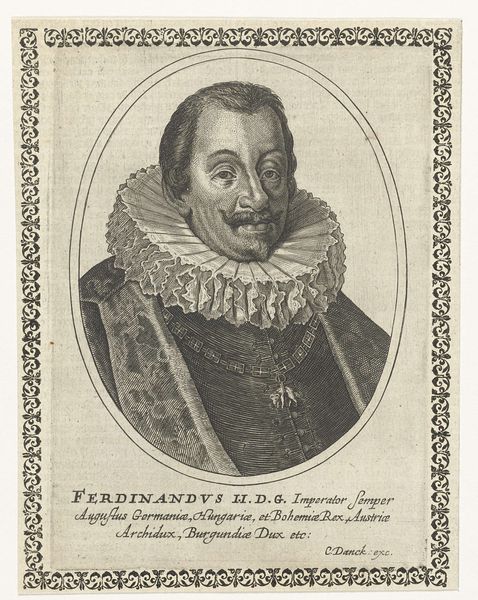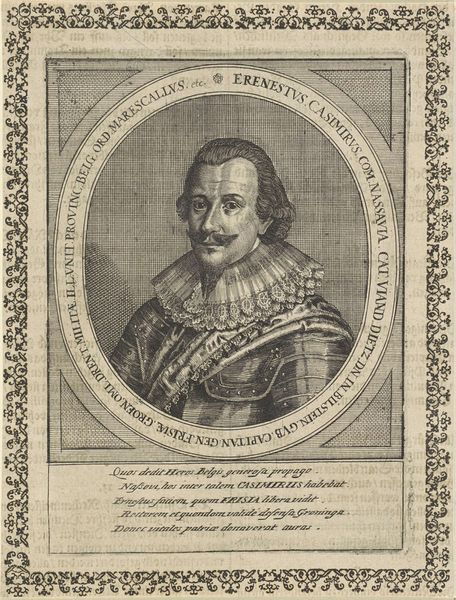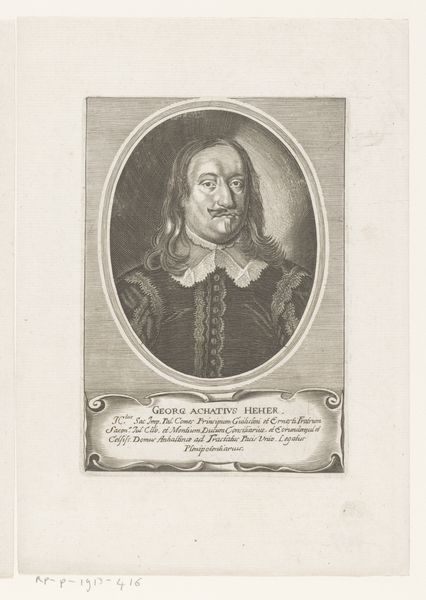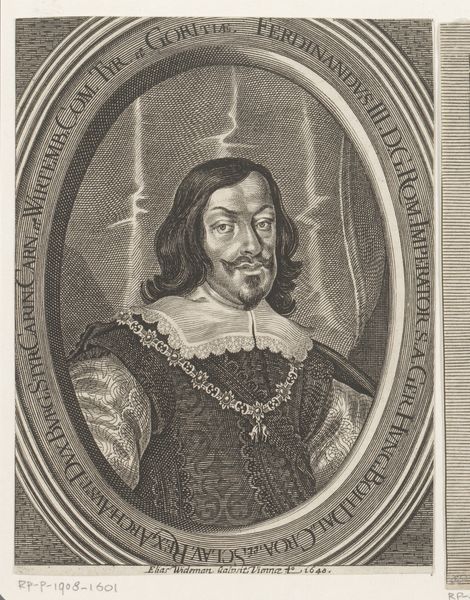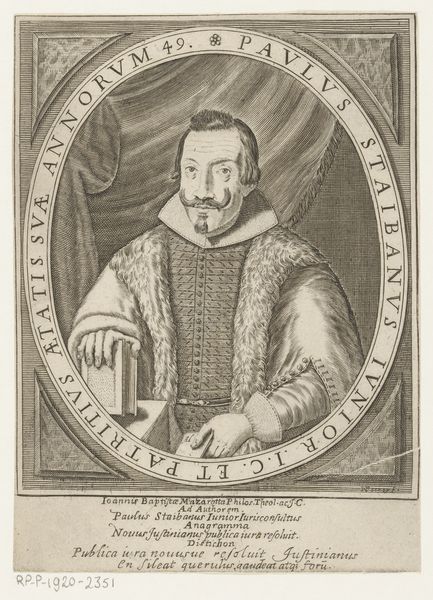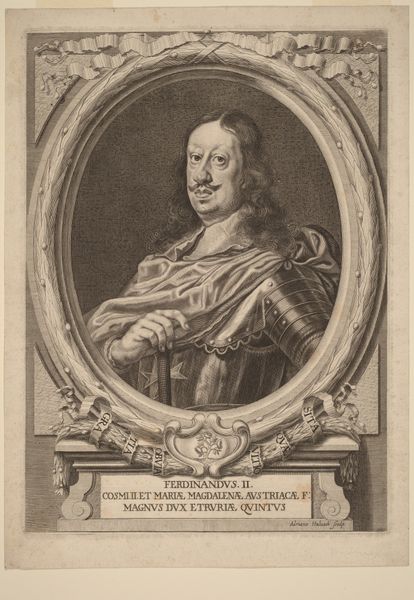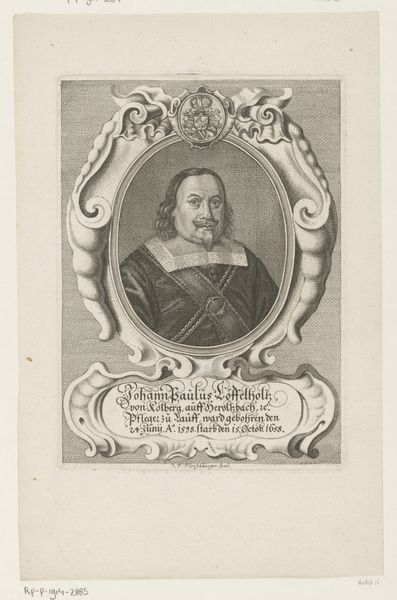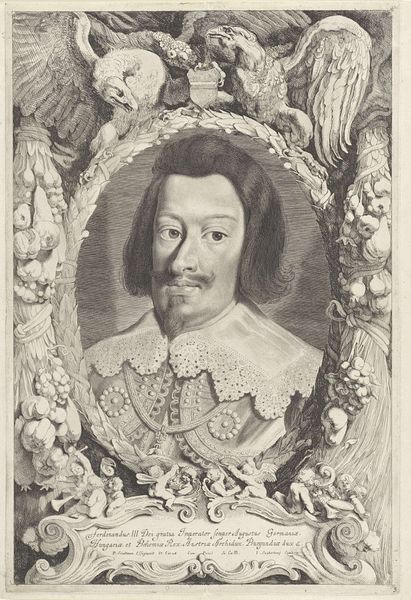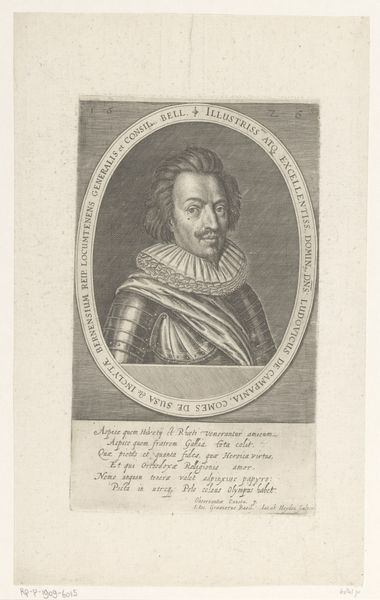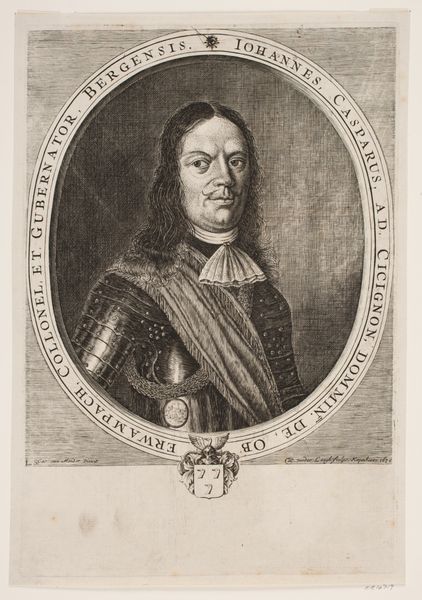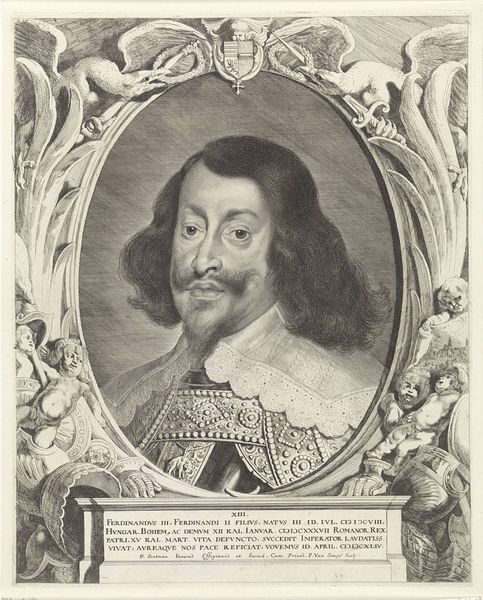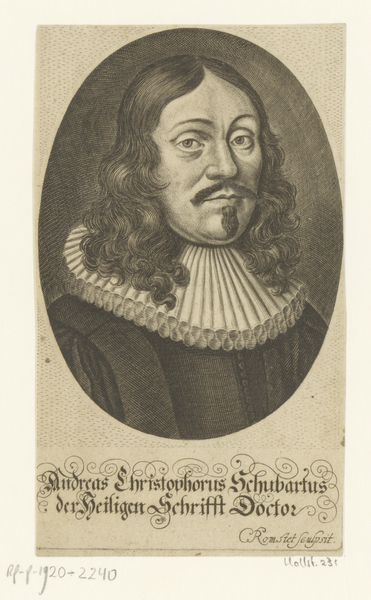
print, metal, engraving
#
portrait
#
baroque
# print
#
metal
#
old engraving style
#
personal sketchbook
#
engraving
Dimensions: height 184 mm, width 126 mm
Copyright: Rijks Museum: Open Domain
Curator: At first glance, I'm drawn to the stark contrast in this print, and that dominating ruff around his neck. It looks almost imprisoning, doesn’t it? Editor: Indeed. We are looking at a portrait of Ferdinand III, made sometime between 1618 and 1655 by Sebastian Furck. The engraving medium, with its dependence on metal and the skill of the engraver, offers a lot to unpack about the culture that produced it. Curator: I agree. The technical skill to achieve this level of detail in metal, with all the linear details in the face and clothing—it is a kind of artisanal labor. It speaks to a culture deeply invested in representation through highly specialized craft practices. How do you read this artifact in the historical narrative? Editor: This piece clearly exemplifies the power dynamics of the time. The meticulous detail—the regalia, that imposing collar, the long Latin text emphasizing Ferdinand’s vast array of titles—all serve to construct and reinforce his authority in a very public manner. These portraits were often disseminated widely to project an image of stability and dominance, crucial for the Habsburgs during a turbulent period of the Thirty Years’ War. Curator: And the choice of print? Producing these in multiples made it far more accessible to various consumers. It’s a commodity, of sorts. Its distribution certainly facilitated its propagandistic capabilities and its engagement with the cultural milieu beyond courtly spheres. Editor: Exactly. Prints had a profound social and political function, enabling imagery and ideals to permeate different levels of society. Also consider that the institutions like the church were being undermined at this time, it's so intriguing to observe the increasing political clout of imagery of this kind. Curator: It is interesting to think of such an iconic representation circulating, becoming a recognizable image synonymous with Habsburg rule due to mechanical reproduction. Editor: Absolutely. Seeing the engraving through this lens makes the image's ability to inform the social imaginary particularly apparent. Curator: Seeing it, in person, with that kind of awareness provides a richer picture of the cultural economy of that time. Editor: Agreed, bringing light to the convergence of craftsmanship and socio-political influence enriches the viewing experience, even centuries later.
Comments
No comments
Be the first to comment and join the conversation on the ultimate creative platform.
